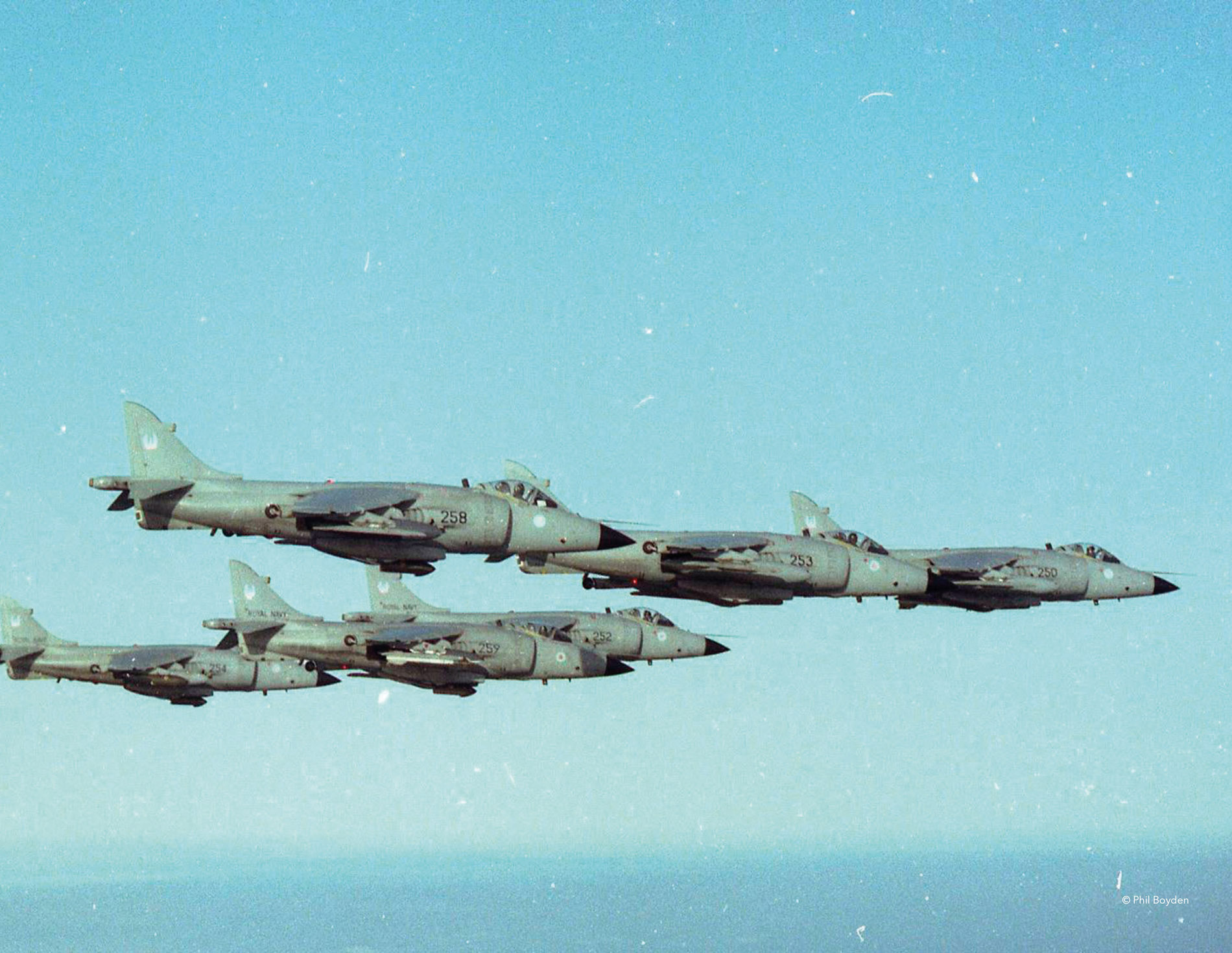

Jump jet. On 21 October 1960, three years after initial design work started, test pilot Bill Bedford flew the Hawker P.1127 prototype for the first time at Dunsfold Aerodrome in Surrey. The revolutionary little vertical take-off and landing jet remained tethered to the ground throughout.
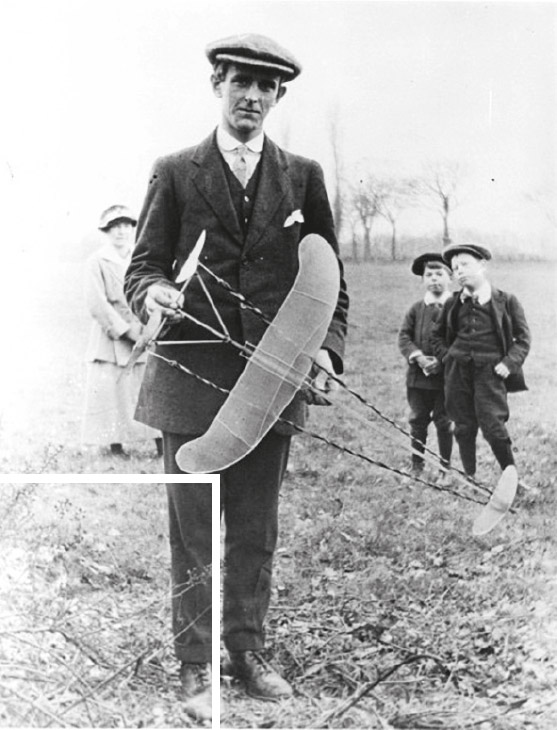
Born in 1893 during the reign of Queen Victoria, Hawker Chief Designer Sir Sydney Camm had been responsible for the design of a long line of iconic aircraft including the Hurricane, Sea Fury and Hunter before overseeing the team that designed the P.1127 the machine that would evolve into the Harrier.

The Harrier GR.1 entered service with 1(F) Squadron RAF in 1969. In 1971, a detachment led by the pioneering V/STOL units first CO, Ken Hayr, conducted successful trials aboard HMS
Ark Royal, the Royal Navys last conventional aircraft carrier. Four years later the Navy ordered twenty-four Sea Harriers to operate from three new Invincible class carriers.
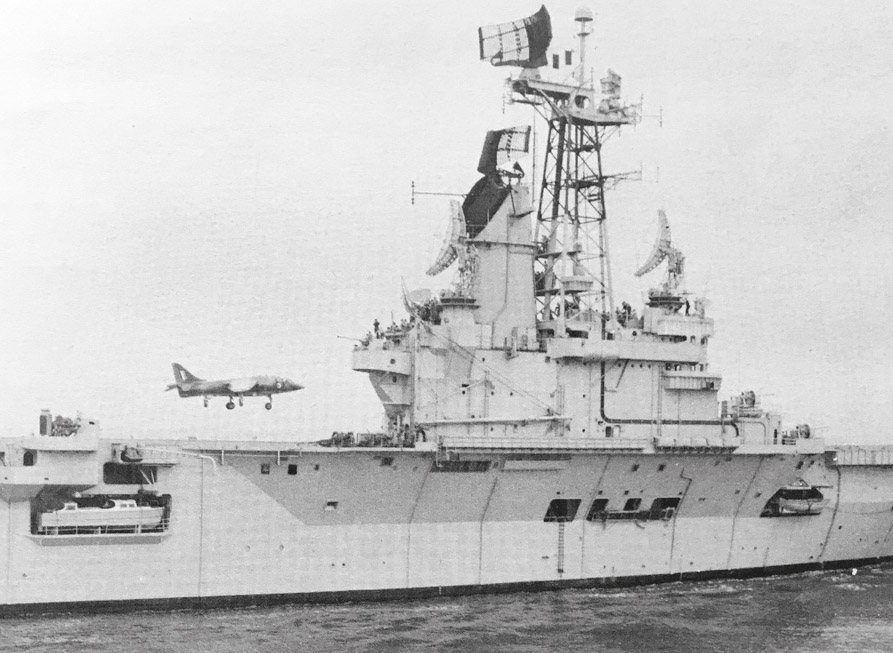
Two years earlier, Hawker Siddeley Chief Test Pilot John Farley flew the Harrier from the deck of Argentinas freshly acquired aircraft carrier
25 de Mayo as she sailed home from Rotterdam for the first time. A US offer of cheap second-hand A-4 Skyhawks headed off the Argentine Navy interest in buying the Harrier.
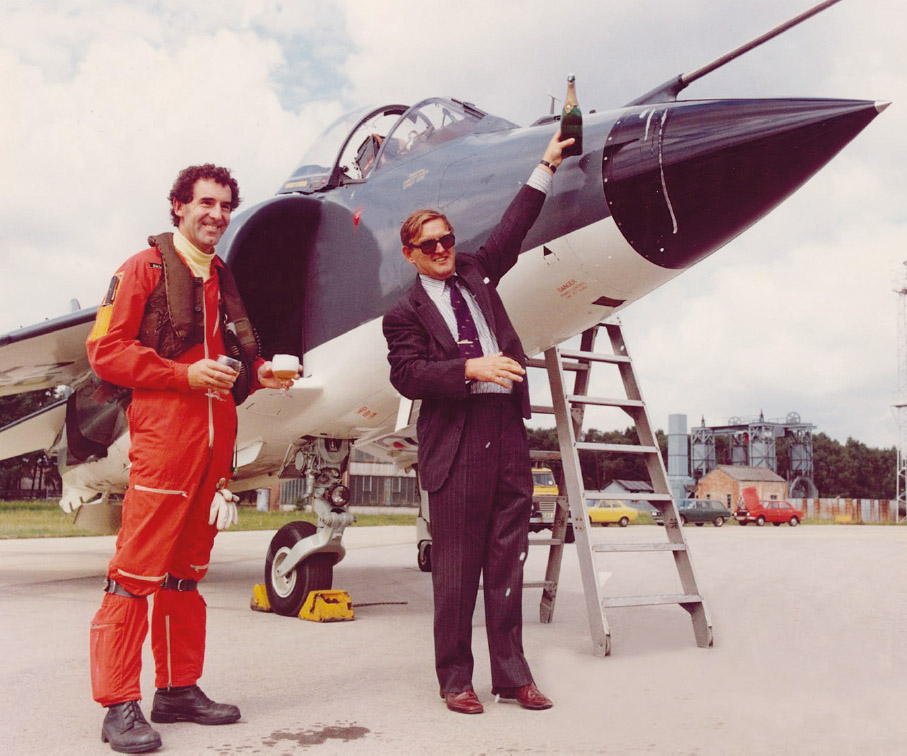
A month after the first flight of the Sea Harrier FRS.1 in August 1978, John Farley and Sea Harrier Chief Designer John Fozard celebrate the first launch from a ski-jump. The ski-jump, designed to assist short take-offs at sea, was demonstrated in public at that years Farnborough Air Show.
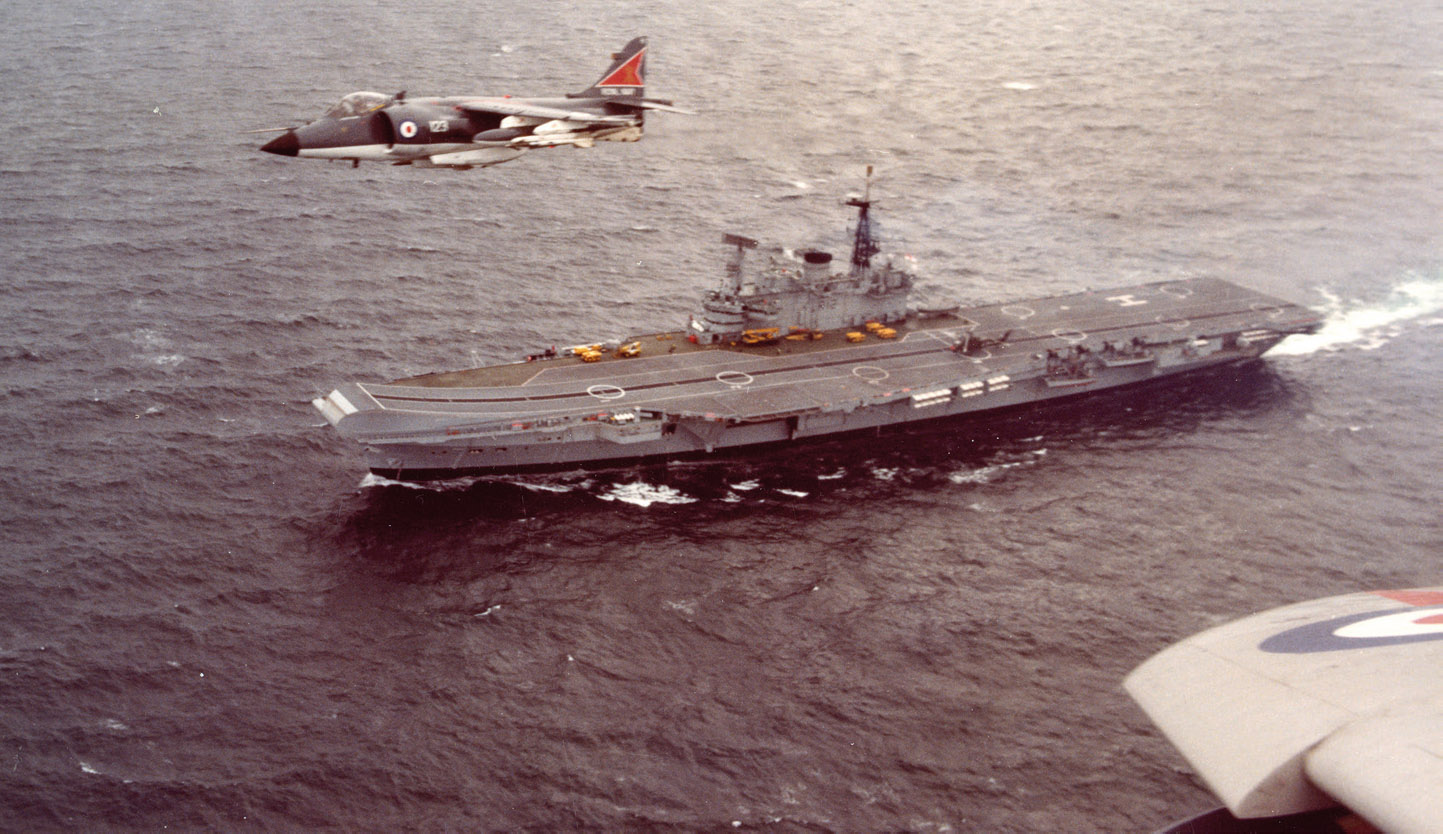
Lieutenant Commander Tim Gedge, CO of 800 NAS, the first frontline Sea Harrier unit, flies over HMS
Hermes, a former conventional carrier refitted with a 12 ski-jump for Sea Harrier operations.
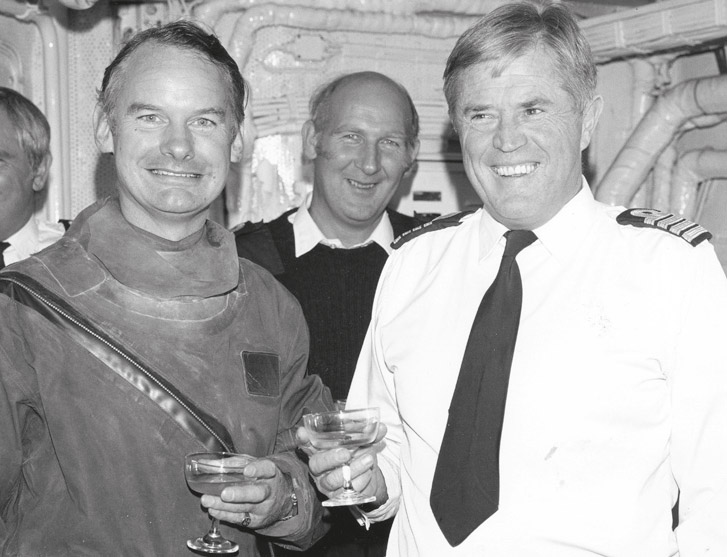
Tim Gedge and Captain Linley Middleton celebrate 800s first embarkation aboard HMS
Hermes with a glass of champagne. Note the thick rubber immersion suit worn by Gedge to protect him in the event of an ejection over water. Standing behind them is John Locke, Middletons Executive Officer and second-in-command.
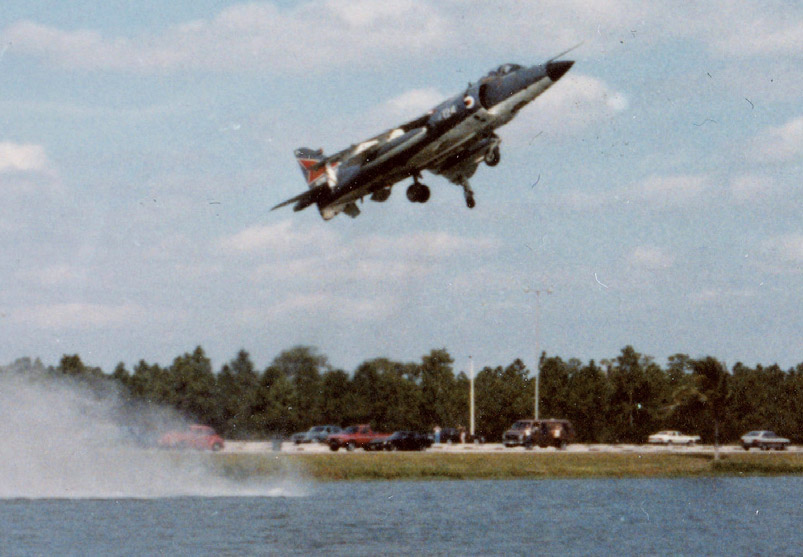
In September 1981, during a deployment to the United States aboard
Hermes, 800 NAS Sea Harriers performed for the crowds at the Pratt & Whitney factory in West Palm Beach, Florida. The perception that the jet was more of an airshow novelty than a serious warplane was not uncommon at the time.
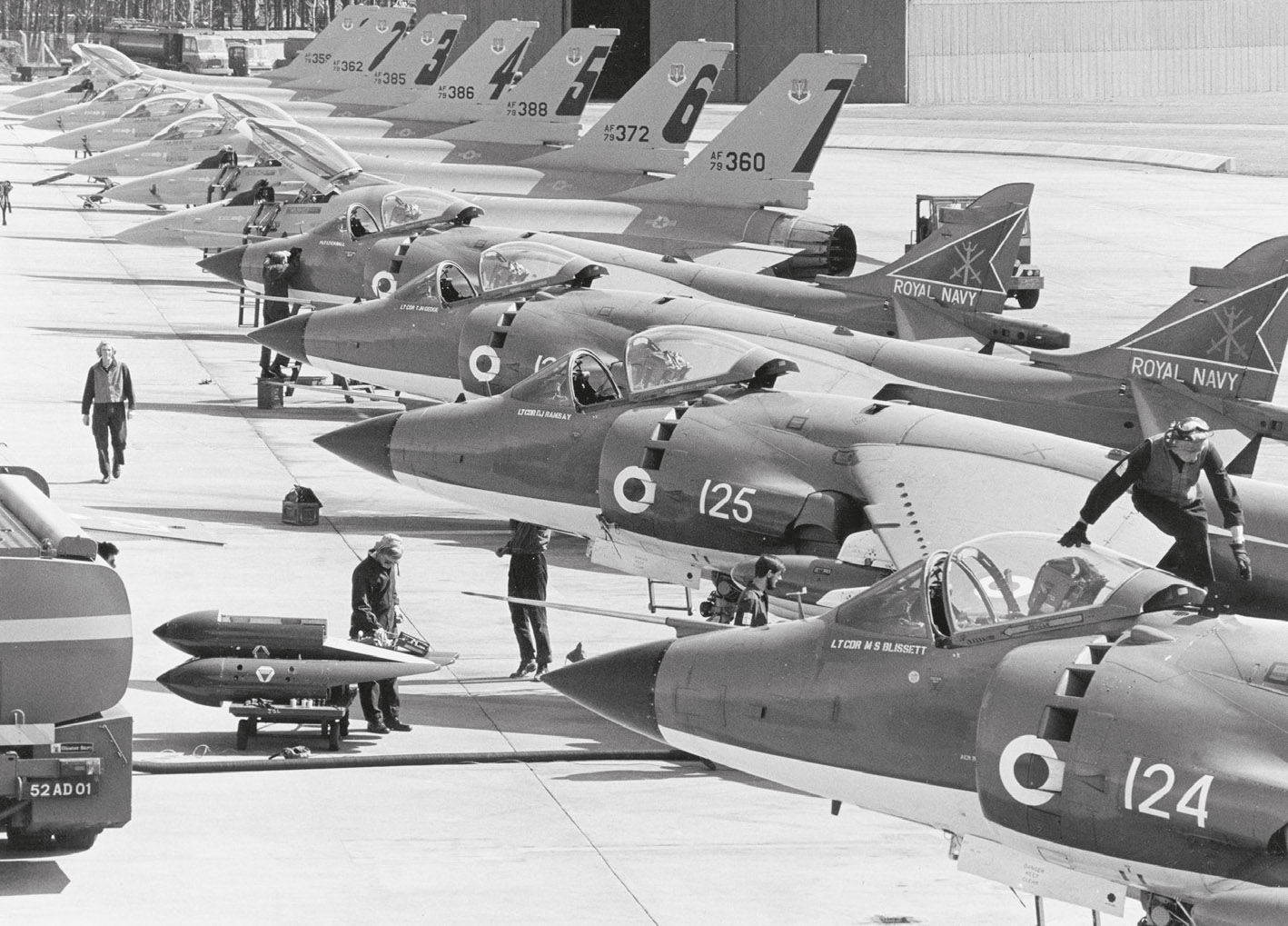
TOPGUN. Often underrated, the Sea Harrier proved to be an unexpectedly lethal opponent when 800 Squadron flew air combat training sorties against the USAFs highly regarded new F-16 fighter. Photographs of the F-16 caught in the SHARs gunsights made the papers.
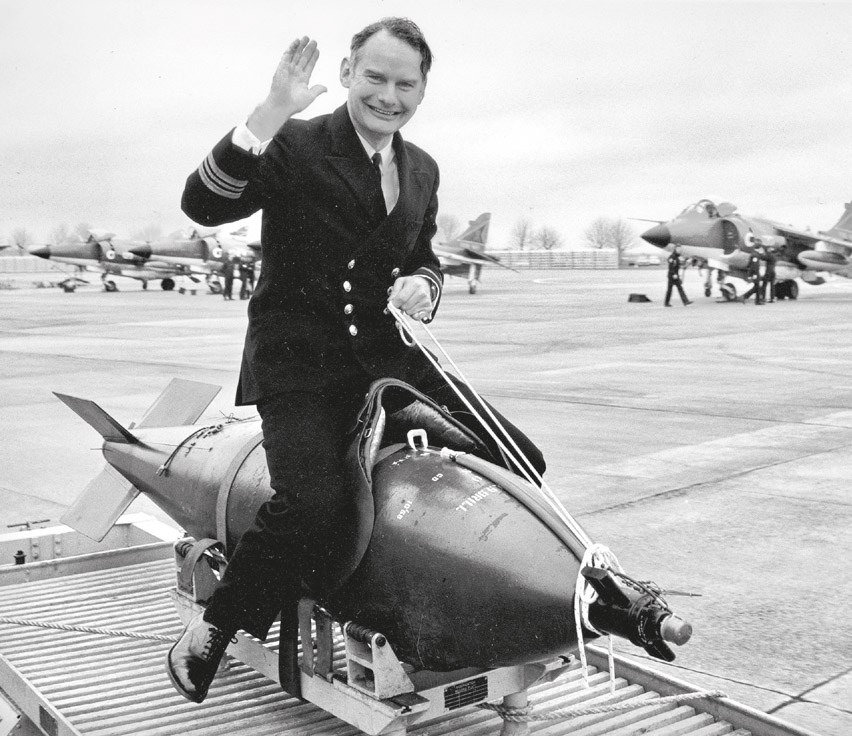
After two years as CO, on 20 January 1982 Tim Gedge handed over command of 800 Squadron to Lieutenant Commander Andy Auld. To mark the occasion, the squadron towed Gedge around the Yeovilton flightline on an inert 1,000lb bomb.

In a further gesture to their departing CO, the squadron staged a six-aircraft flypast. At the time, the frontline SHAR squadrons were only five-strong, barely enough to maintain a round-the-clock air defence for any substantial length of time.
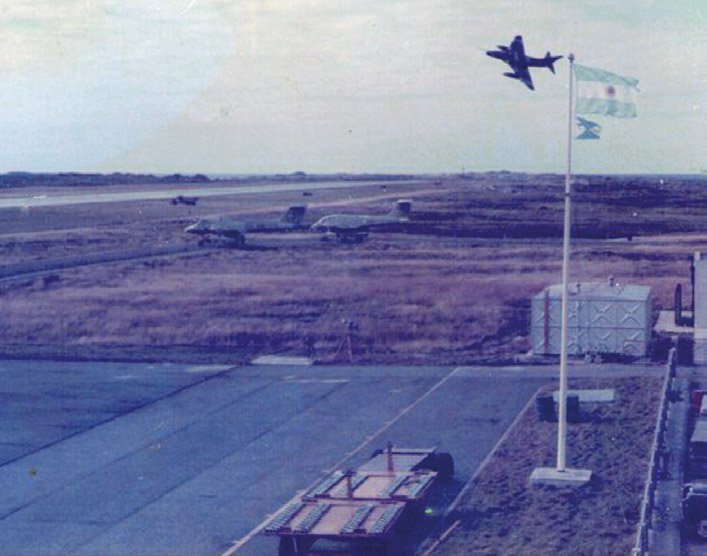
On 1 April 1982, Argentine forces seized the Falkland Islands. An Argentine Air Force A-4 Skyhawk rounds the national flag at Base Area Militar Malvinas, formerly Stanley Airport. Note the Pucar turboprop attack aircraft on the ground, just two of a more substantial force deployed to reinforce the occupation.
 Hermes
Hermes stores for war. Despite having only recently returned to Portsmouth after being at sea for the previous two months, Lin Middletons ship was brought to four hours notice for steam. 800 Squadron was ordered to re-embark on the afternoon of 2 April.

Admiral Sandy Woodward was given command of the Task Force despatched to recapture the Falkland Islands. A career submariner, Woodward was known for his exceptionally sharp mind and no less brusque manner. The larger of the two carriers, HMS
Hermes, was made his flagship.
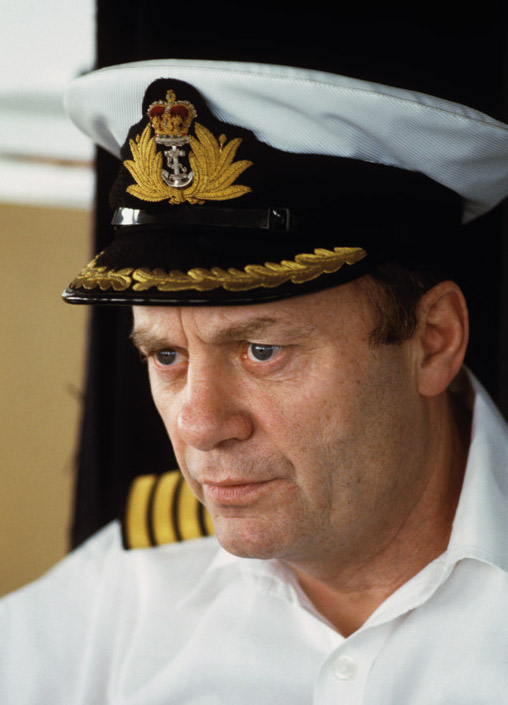
Captain JJ Black. A highly regarded former gunnery officer, Black had assumed command of HMS
Invincible, the first of the Navys new class of anti-submarine carriers, in early 1982.

Phoenix Squadron. Less than a week after the invasion, in anticipation of the twenty Sea Harriers embarked on the carriers suffering unsustainable losses, 809 NAS was recommissioned to provide attrition replacements. Tim Gedge was given command and told he had to be ready to deploy in three weeks.
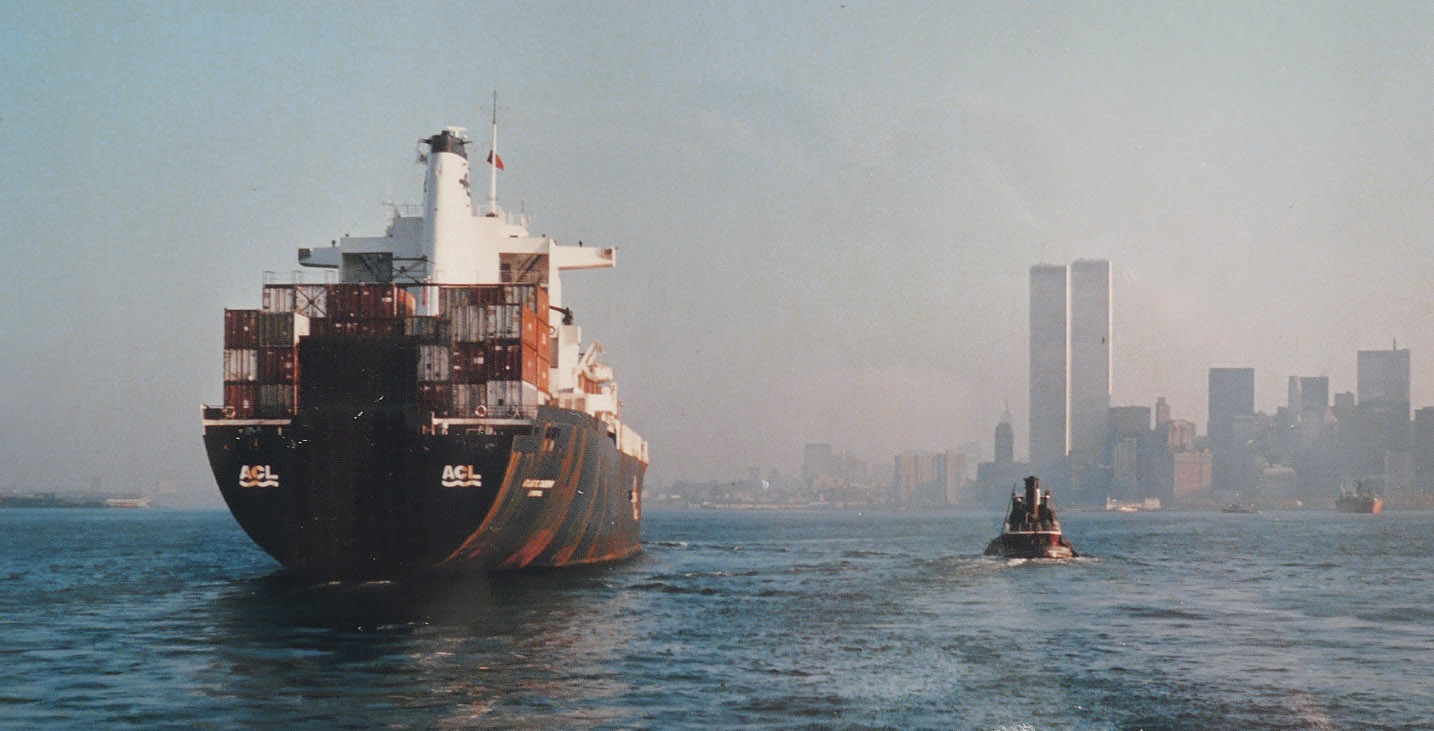
Cunards SS
Atlantic Conveyor approaching New York before the war. A 15,000-ton fast roll-on, roll-off container ship working routes between Europe and North America, she was quickly identified by the Ministry of Defence as a means of carrying 809 Squadron south.
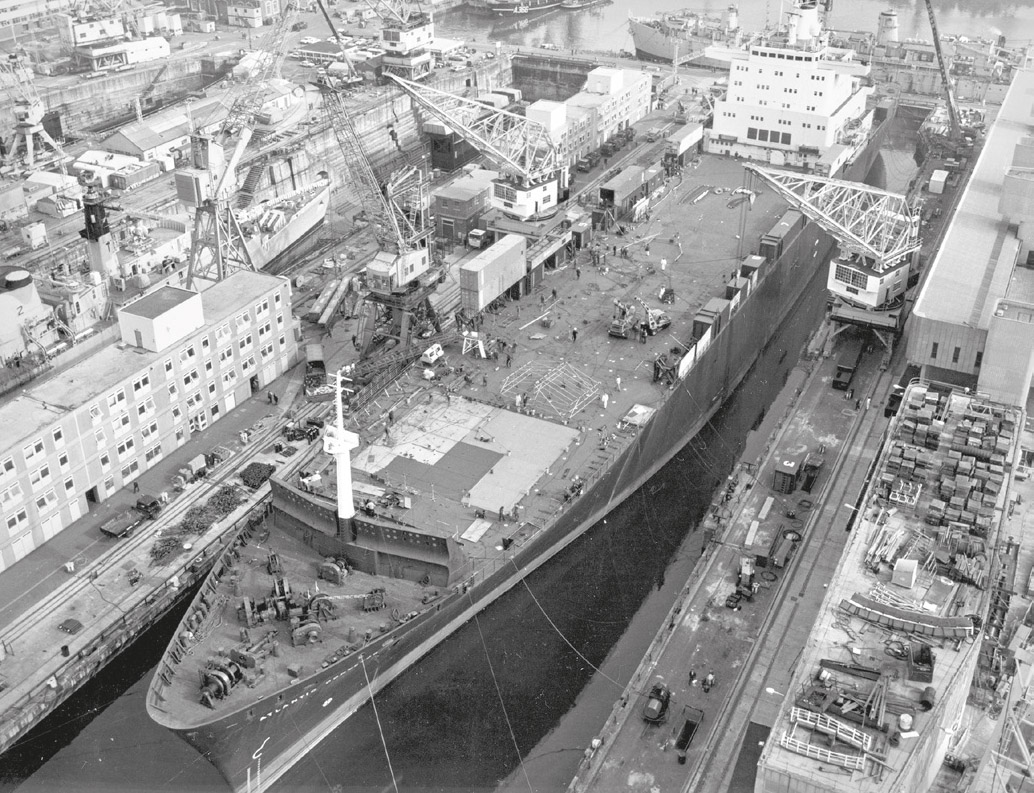
After sailing from Liverpool,
Atlantic Conveyor was modified in the naval dockyards in Devonport to equip her with helicopter pads fore and aft, workspaces and military communications equipment. The conversion was completed in less than ten days.
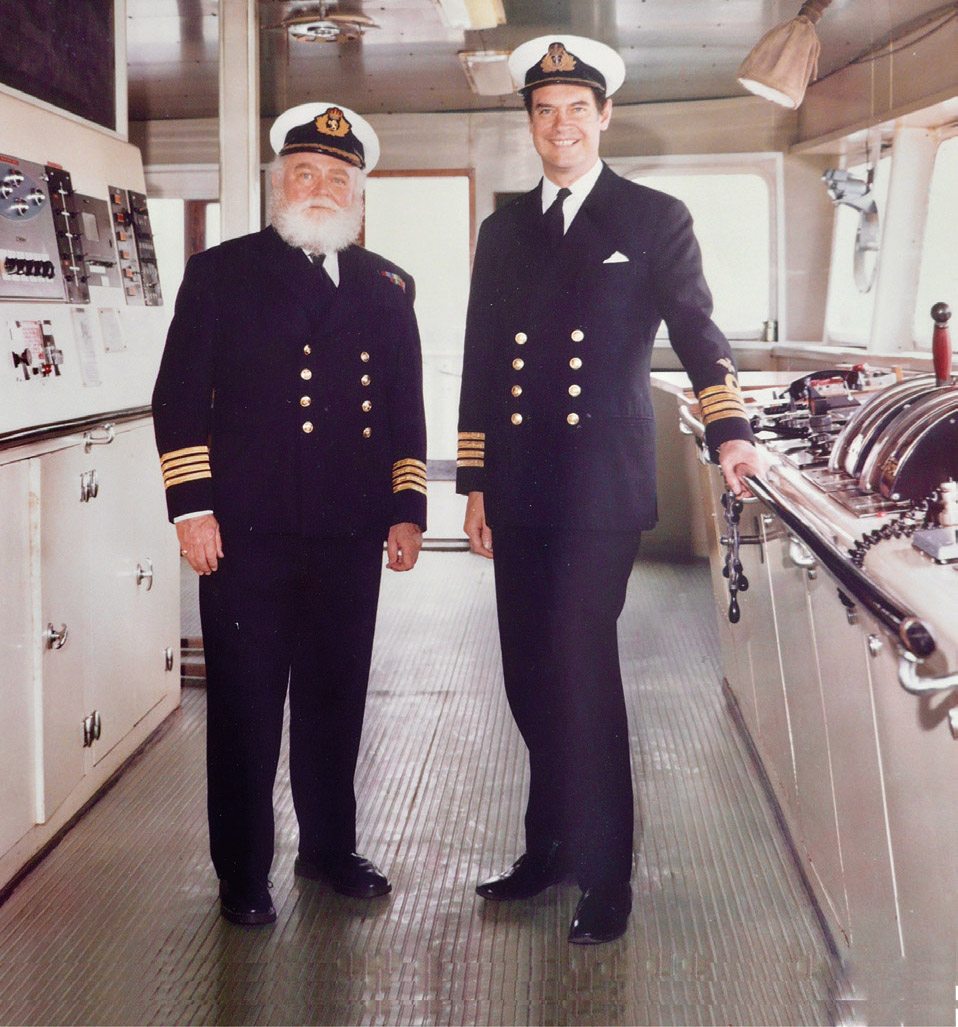 Next page
Next page
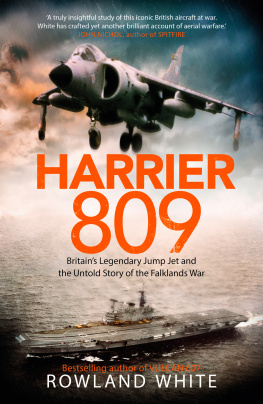
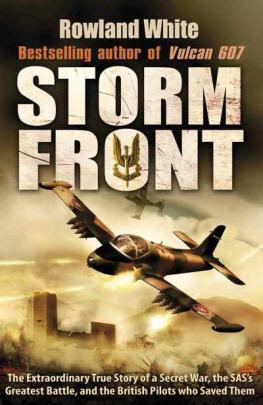





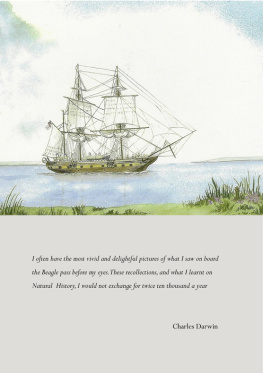
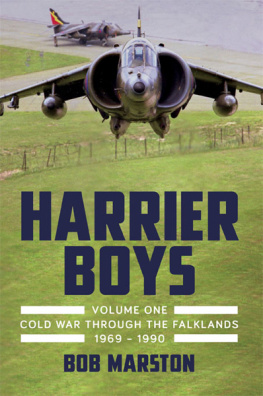
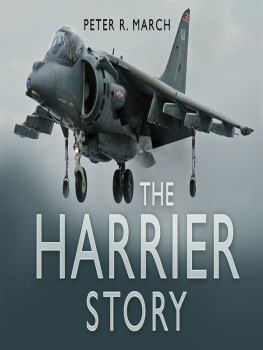
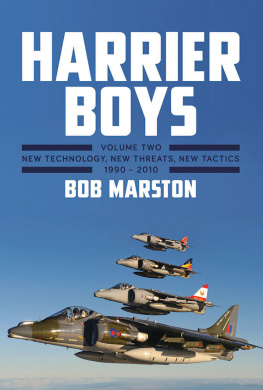
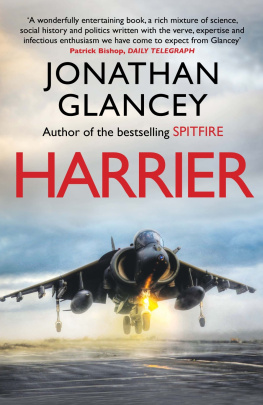


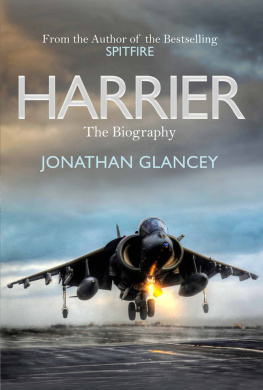


 Jump jet. On 21 October 1960, three years after initial design work started, test pilot Bill Bedford flew the Hawker P.1127 prototype for the first time at Dunsfold Aerodrome in Surrey. The revolutionary little vertical take-off and landing jet remained tethered to the ground throughout.
Jump jet. On 21 October 1960, three years after initial design work started, test pilot Bill Bedford flew the Hawker P.1127 prototype for the first time at Dunsfold Aerodrome in Surrey. The revolutionary little vertical take-off and landing jet remained tethered to the ground throughout. Born in 1893 during the reign of Queen Victoria, Hawker Chief Designer Sir Sydney Camm had been responsible for the design of a long line of iconic aircraft including the Hurricane, Sea Fury and Hunter before overseeing the team that designed the P.1127 the machine that would evolve into the Harrier.
Born in 1893 during the reign of Queen Victoria, Hawker Chief Designer Sir Sydney Camm had been responsible for the design of a long line of iconic aircraft including the Hurricane, Sea Fury and Hunter before overseeing the team that designed the P.1127 the machine that would evolve into the Harrier. The Harrier GR.1 entered service with 1(F) Squadron RAF in 1969. In 1971, a detachment led by the pioneering V/STOL units first CO, Ken Hayr, conducted successful trials aboard HMS Ark Royal, the Royal Navys last conventional aircraft carrier. Four years later the Navy ordered twenty-four Sea Harriers to operate from three new Invincible class carriers.
The Harrier GR.1 entered service with 1(F) Squadron RAF in 1969. In 1971, a detachment led by the pioneering V/STOL units first CO, Ken Hayr, conducted successful trials aboard HMS Ark Royal, the Royal Navys last conventional aircraft carrier. Four years later the Navy ordered twenty-four Sea Harriers to operate from three new Invincible class carriers. Two years earlier, Hawker Siddeley Chief Test Pilot John Farley flew the Harrier from the deck of Argentinas freshly acquired aircraft carrier 25 de Mayo as she sailed home from Rotterdam for the first time. A US offer of cheap second-hand A-4 Skyhawks headed off the Argentine Navy interest in buying the Harrier.
Two years earlier, Hawker Siddeley Chief Test Pilot John Farley flew the Harrier from the deck of Argentinas freshly acquired aircraft carrier 25 de Mayo as she sailed home from Rotterdam for the first time. A US offer of cheap second-hand A-4 Skyhawks headed off the Argentine Navy interest in buying the Harrier. A month after the first flight of the Sea Harrier FRS.1 in August 1978, John Farley and Sea Harrier Chief Designer John Fozard celebrate the first launch from a ski-jump. The ski-jump, designed to assist short take-offs at sea, was demonstrated in public at that years Farnborough Air Show.
A month after the first flight of the Sea Harrier FRS.1 in August 1978, John Farley and Sea Harrier Chief Designer John Fozard celebrate the first launch from a ski-jump. The ski-jump, designed to assist short take-offs at sea, was demonstrated in public at that years Farnborough Air Show. Lieutenant Commander Tim Gedge, CO of 800 NAS, the first frontline Sea Harrier unit, flies over HMS Hermes, a former conventional carrier refitted with a 12 ski-jump for Sea Harrier operations.
Lieutenant Commander Tim Gedge, CO of 800 NAS, the first frontline Sea Harrier unit, flies over HMS Hermes, a former conventional carrier refitted with a 12 ski-jump for Sea Harrier operations. Tim Gedge and Captain Linley Middleton celebrate 800s first embarkation aboard HMS Hermes with a glass of champagne. Note the thick rubber immersion suit worn by Gedge to protect him in the event of an ejection over water. Standing behind them is John Locke, Middletons Executive Officer and second-in-command.
Tim Gedge and Captain Linley Middleton celebrate 800s first embarkation aboard HMS Hermes with a glass of champagne. Note the thick rubber immersion suit worn by Gedge to protect him in the event of an ejection over water. Standing behind them is John Locke, Middletons Executive Officer and second-in-command. In September 1981, during a deployment to the United States aboard Hermes, 800 NAS Sea Harriers performed for the crowds at the Pratt & Whitney factory in West Palm Beach, Florida. The perception that the jet was more of an airshow novelty than a serious warplane was not uncommon at the time.
In September 1981, during a deployment to the United States aboard Hermes, 800 NAS Sea Harriers performed for the crowds at the Pratt & Whitney factory in West Palm Beach, Florida. The perception that the jet was more of an airshow novelty than a serious warplane was not uncommon at the time. TOPGUN. Often underrated, the Sea Harrier proved to be an unexpectedly lethal opponent when 800 Squadron flew air combat training sorties against the USAFs highly regarded new F-16 fighter. Photographs of the F-16 caught in the SHARs gunsights made the papers.
TOPGUN. Often underrated, the Sea Harrier proved to be an unexpectedly lethal opponent when 800 Squadron flew air combat training sorties against the USAFs highly regarded new F-16 fighter. Photographs of the F-16 caught in the SHARs gunsights made the papers. After two years as CO, on 20 January 1982 Tim Gedge handed over command of 800 Squadron to Lieutenant Commander Andy Auld. To mark the occasion, the squadron towed Gedge around the Yeovilton flightline on an inert 1,000lb bomb.
After two years as CO, on 20 January 1982 Tim Gedge handed over command of 800 Squadron to Lieutenant Commander Andy Auld. To mark the occasion, the squadron towed Gedge around the Yeovilton flightline on an inert 1,000lb bomb. In a further gesture to their departing CO, the squadron staged a six-aircraft flypast. At the time, the frontline SHAR squadrons were only five-strong, barely enough to maintain a round-the-clock air defence for any substantial length of time.
In a further gesture to their departing CO, the squadron staged a six-aircraft flypast. At the time, the frontline SHAR squadrons were only five-strong, barely enough to maintain a round-the-clock air defence for any substantial length of time. On 1 April 1982, Argentine forces seized the Falkland Islands. An Argentine Air Force A-4 Skyhawk rounds the national flag at Base Area Militar Malvinas, formerly Stanley Airport. Note the Pucar turboprop attack aircraft on the ground, just two of a more substantial force deployed to reinforce the occupation.
On 1 April 1982, Argentine forces seized the Falkland Islands. An Argentine Air Force A-4 Skyhawk rounds the national flag at Base Area Militar Malvinas, formerly Stanley Airport. Note the Pucar turboprop attack aircraft on the ground, just two of a more substantial force deployed to reinforce the occupation. Hermes stores for war. Despite having only recently returned to Portsmouth after being at sea for the previous two months, Lin Middletons ship was brought to four hours notice for steam. 800 Squadron was ordered to re-embark on the afternoon of 2 April.
Hermes stores for war. Despite having only recently returned to Portsmouth after being at sea for the previous two months, Lin Middletons ship was brought to four hours notice for steam. 800 Squadron was ordered to re-embark on the afternoon of 2 April. Admiral Sandy Woodward was given command of the Task Force despatched to recapture the Falkland Islands. A career submariner, Woodward was known for his exceptionally sharp mind and no less brusque manner. The larger of the two carriers, HMS Hermes, was made his flagship.
Admiral Sandy Woodward was given command of the Task Force despatched to recapture the Falkland Islands. A career submariner, Woodward was known for his exceptionally sharp mind and no less brusque manner. The larger of the two carriers, HMS Hermes, was made his flagship. Captain JJ Black. A highly regarded former gunnery officer, Black had assumed command of HMS Invincible, the first of the Navys new class of anti-submarine carriers, in early 1982.
Captain JJ Black. A highly regarded former gunnery officer, Black had assumed command of HMS Invincible, the first of the Navys new class of anti-submarine carriers, in early 1982. Phoenix Squadron. Less than a week after the invasion, in anticipation of the twenty Sea Harriers embarked on the carriers suffering unsustainable losses, 809 NAS was recommissioned to provide attrition replacements. Tim Gedge was given command and told he had to be ready to deploy in three weeks.
Phoenix Squadron. Less than a week after the invasion, in anticipation of the twenty Sea Harriers embarked on the carriers suffering unsustainable losses, 809 NAS was recommissioned to provide attrition replacements. Tim Gedge was given command and told he had to be ready to deploy in three weeks. Cunards SS Atlantic Conveyor approaching New York before the war. A 15,000-ton fast roll-on, roll-off container ship working routes between Europe and North America, she was quickly identified by the Ministry of Defence as a means of carrying 809 Squadron south.
Cunards SS Atlantic Conveyor approaching New York before the war. A 15,000-ton fast roll-on, roll-off container ship working routes between Europe and North America, she was quickly identified by the Ministry of Defence as a means of carrying 809 Squadron south. After sailing from Liverpool, Atlantic Conveyor was modified in the naval dockyards in Devonport to equip her with helicopter pads fore and aft, workspaces and military communications equipment. The conversion was completed in less than ten days.
After sailing from Liverpool, Atlantic Conveyor was modified in the naval dockyards in Devonport to equip her with helicopter pads fore and aft, workspaces and military communications equipment. The conversion was completed in less than ten days.